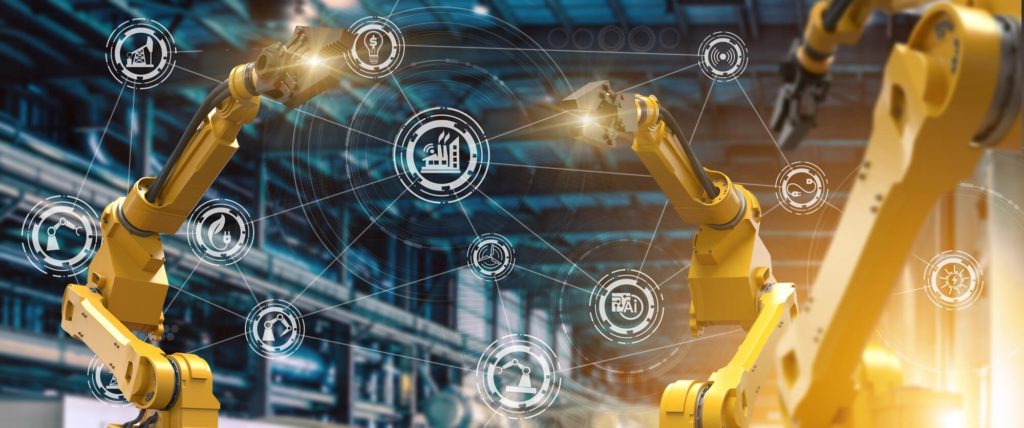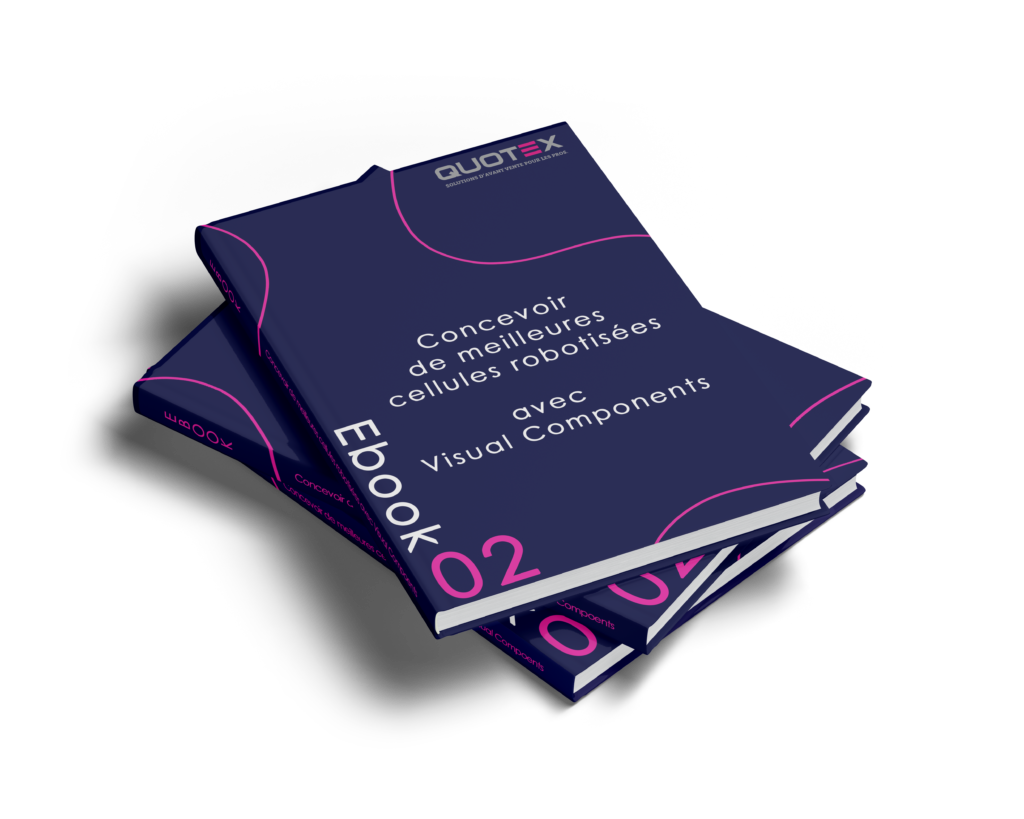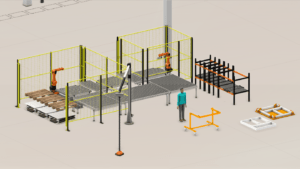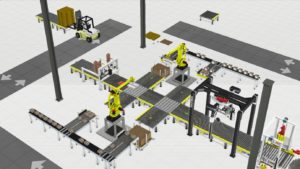The digital twin and virtual commissioning are two concrete applications of Industry 4.0. Find out how they allow manufacturers to save time and avoid errors in their design and optimization of production lines.
At the dawn of the fourth industrial revolution, we are seeing a renewed interest in technologies that have been around for a few years, but which are being looked at differently by many manufacturers in the era of technology. 'Industry 4.0. In this article, we'll highlight some of the terms and technologies we're often asked about, their applications, and why we think they're important.
Over the years, the definition (and promise) of the digital twin has evolved, but the basic idea remains the same: a dynamic, virtual, software-generated representation of physical assets and corresponding processes.

Industry 4.0: a booming market
The term Industry 4.0 as we know it now was first described during a presentation at the Hannover Messe 2011 by Professor Wolfgang Wahlster, Director and CEO of the German Research Center for Artificial Intelligence.
Today, it is a widely used term that means different things to different people (this article provides a good summary of some of the different definitions offered by industry thought leaders), but the basic idea is the same: Industry 4.0 refers to the intelligent networking of machines and processes for industry using information and communication technologies .
Because the vision and promise of Industry 4.0 is so bold and its impact so significant, manufacturers cannot afford to ignore it. The Industry 4.0 opportunity is huge for suppliers and manufacturers, with most research firms expecting the market for Industry 4.0 technologies to at least double in the next 5 years .
The impact these technologies will have on the global economy is significant, Mckinsey estimates that Industry 4.0 technologies in factories can generate an economic impact of $1.2 billion to $3.7 billion per year by 2025 .

The digital twin in industry 4.0
The concept of digital twin
The concept of digital twin began to be recognized in the early 2000s, notably thanks to the work of Michael GRIEVES at the University of Michigan . GRIEVES proposed that a digital twin model has three main parts:
- physical products in real space,
- virtual products in virtual space,
- the data and information connections that link virtual and real products.
Over the years, the definition (and promise) of the digital twin has evolved, but the basic idea remains the same: a dynamic, virtual, software-generated representation of physical assets and processes .
Applications of the digital twin
There are many applications and use cases of the digital twin , and as it is a very active area of research and innovation, the list continues to grow. Some general uses of the digital twin include:
- Validating system models with real-world data
- Decision support and user alerts
- Predicting changes in physical systems over time
- Discover new application opportunities and new revenue streams
The potential benefits of digital twin applications are compelling: improved efficiency, better product quality, shorter unplanned downtime, and reduced start-up times , to name a few. Digital twins can be applied from initial factory planning and design through commissioning and maintenance , giving them value throughout the production lifecycle.
When it comes to investing in digital twin technology, manufacturers today are much more optimistic about its prospects. While the term digital twin has been in vogue for several years, more and more manufacturers are now investing in this area, for example through digital twin software .
In a recent survey of 300 manufacturing executives, LNS Research found that 75% of respondents had implemented or planned digital twin initiatives in their organizations .
Virtual commissioning
Designing and implementing a new production solution is often a lengthy and costly process. Once the design is finalized and the equipment installed, there remains one phase to complete before production transfer: commissioning .
This is where controls are integrated, bugs are found and fixed, procedures are written, and operators are trained on new equipment, new processes, or revised procedures. This phase is difficult to plan and frequently exceeds the allotted time, delaying production and can lead to late shipments or even lost business .
Digital twins can be used for many purposes, including design adjustments and diagnostics . Additionally, because they are accurate representations of physical assets, they can also be used to streamline and optimize the commissioning phase .
Instead of commissioning a new system or robotic cell in the physical world, virtual commissioning involves creating a digital twin and then testing and verifying the model in a simulated virtual environment .
This allows:
- Code testing and debugging in a virtual environment
- Simulation of equipment operation, identification of possible problems and rapid evaluation of alternative solutions
- Simulation of the operation of a robotic cell
- The development of operating methods
- Training of supervisors and operators
- Simulating the impact of new machines on existing production to identify bottlenecks and space constraints so they can be addressed before installation
In short, virtual commissioning allows engineers and operators to test new installations, as well as any adjustments – both in the start-up and maintenance phases – before implementing them in the physical world .
The result is smoother, more streamlined installation and integration , fewer cost overruns and minimal risks of downtime that could impact production.
Digital Twin Software: Plan Your Next Industry 4.0 Project with Visual Components
With the increasing number of innovations and investments in manufacturing today, it is an exciting time for engineers and planners responsible for planning and upgrading production capabilities.
Whether you're planning your first Industry 4.0 project or designing a new smart factory, 3D production simulation software is an essential tool for manufacturing professionals looking to modernize their factories . Visual Components platform allows manufacturers to design, verify, optimize and commission production solutions in a risk-free virtual environment .
If you would like to learn more about how Visual Components can help you with your next factory modernization project, contact us to request a free product demonstration and consultation.




